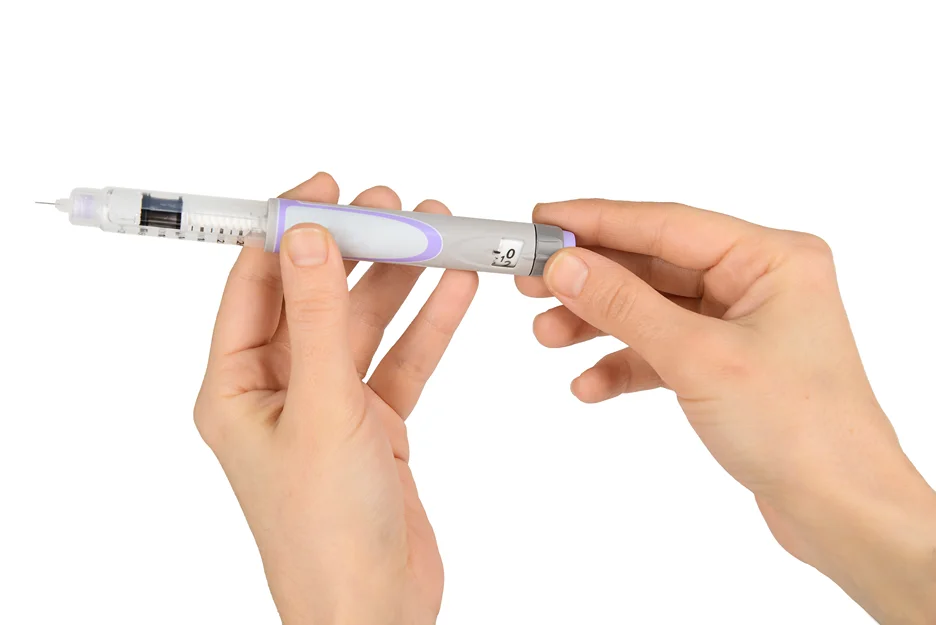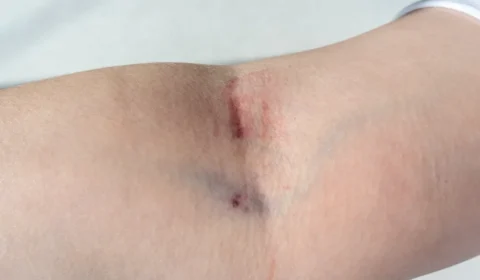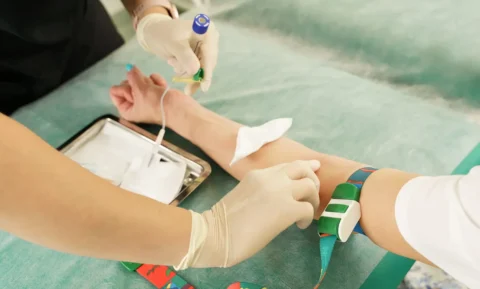Equipping You With In-depth Knowledge To Mitigate Potential Risks and Manage Adverse Reactions
As a nurse, your integral role in patient care involves staying updated with the latest developments in diabetes medication. One of the newer entrants in the field of diabetes treatment and weight management is Tirzepatide.
This article will delve deep into the potential side effects of Tirzepatide, arming you with the knowledge to safeguard patient wellbeing while maximizing treatment effectiveness.
Understanding Tirzepatide and its Mechanism of Action
Before discussing the side effects of Tirzepatide, it is vital to understand its function. Tirzepatide is a dual glucose-dependent insulinotropic polypeptide (GIP) and glucagon-like peptide-1 (GLP-1) receptor agonist. Its ability to control blood glucose levels and promote weight reduction has positioned it as a significant asset in the management of type 2 diabetes and obesity.
Tirzepatide aids glycemic control in adults with type 2 diabetes by stimulating insulin secretion in response to increased blood glucose following food intake. It also slows gastric emptying, leading to a decrease in food intake, which assists in body weight reduction. However, as with any medication, understanding the potential risk of side effects is essential.
Comparing Tirzepatide to Other GLP-1 Receptor Agonists
As nurses play a critical role in administering medication and monitoring patient responses, understanding how Tirzepatide compares to other GLP-1 receptor agonists can be crucial. This comparison not only helps with anticipating potential side effects but also with patient education and counseling. Let’s take a closer look at how Tirzepatide measures against other popular GLP-1 receptor agonists.
| GLP-1 Receptor Agonists | Efficacy for Blood Sugar Control | Efficacy for Weight Reduction | Common Side Effects |
| Tirzepatide | High | High | Nausea, vomiting, diarrhea |
| Exenatide | Medium | Medium | Nausea, vomiting, diarrhea |
| Liraglutide | Medium-High | High | Nausea, vomiting, diarrhea |
| Dulaglutide | Medium-High | Medium | Nausea, vomiting, diarrhea |
Key Tirzepatide Side Effects Nurses Should Know
Nurses are the frontline defense for recognizing and managing potential side effects. Here are some of the common and long-term side effects of Tirzepatide:
1. Gastrointestinal issues: Like many GLP-1 receptor agonists, Tirzepatide can cause upset stomach, abdominal pain, and severe stomach issues, which can result in tirzepatide-induced diarrhea and constipation. Your patient may also report feelings of abdominal discomfort or distension.
1.1 Nausea and vomiting: Patients may experience tirzepatide-induced nausea, especially when starting the treatment or increasing the dosage. Bland foods can often help mitigate these symptoms.
2. Injection site reactions: Similar to other injectable diabetes medications, Tirzepatide can cause reactions at the injection site, ranging from mild irritation to severe allergic reactions.
It’s important to remember that these are not the only possible side effects. You should remain vigilant for other potential tirzepatide adverse effects, including shortness of breath, slurred speech, or symptoms suggesting allergic reactions, such as rash or swelling.
Monitoring Timeline for Potential Side Effects
Once the medication has been administered, it’s equally important to monitor potential side effects and their progression. This timeline provides a rough estimation of when certain side effects may begin, peak, and resolve, offering you a practical guide for managing these effects effectively.
| Side Effects | Onset after Tirzepatide Administration | Peak Incidence | Likely Resolution |
| Nausea | 1-2 days | 1-2 weeks | 4-6 weeks |
| Vomiting | 1-2 days | 1-2 weeks | 4-6 weeks |
| Diarrhea | 1-2 days | 1-2 weeks | 4-6 weeks |
| Abdominal Pain | 1-2 days | 1-2 weeks | 4-6 weeks |
Long-term Side Effects of Tirzepatide

In addition to the more immediate side effects, some patients may experience long-term side effects of Tirzepatide. These include:
- Pancreatitis: While rare, tirzepatide side effects could include pancreatitis. If a patient reports severe abdominal pain, you should consider this as a potential cause.
- Hypersensitivity reactions: Allergic reactions may occur, including anaphylaxis. Patients with known hypersensitivity to tirzepatide should avoid this medication.
- Gallbladder disease: Acute gallbladder disease is a potential long-term side effect of Tirzepatide, although the incidence rate is still under investigation.
- Potential Risk of Thyroid C-Cell Tumors: In rodent studies, GLP-1 medications have shown a potential risk for medullary thyroid carcinoma. Although the human relevance of these findings is not established, it’s crucial to be aware of this potential risk, which underscores the importance of conducting a thyroid ultrasound if patients present symptoms suggesting thyroid tumors.
- Hypoglycemia: Tirzepatide by itself usually does not cause low blood sugar. However, when prescribed with other diabetes medications, it may increase the risk of hypoglycemia. Symptoms of hypoglycemia include sweating, shaking, fast heartbeat, hunger, blurred vision, dizziness, headache, or tingling hands or feet.
Remember that every patient is unique, and side effects can vary in severity and incidence. You play a crucial role in monitoring patients for these adverse effects and ensuring appropriate medical attention is sought when needed.
Managing Tirzepatide Side Effects
As a nurse, part of your role is to help patients manage these side effects. Here are some strategies you can recommend:
- Start low and go slow: When starting tirzepatide therapy, consider beginning with a lower dose of tirzepatide before incrementally increasing it. This can help to minimize the potential gastrointestinal side effects.
- Provide clear instructions about symptoms to monitor: Educate patients on recognizing potential tirzepatide side effects, including severe abdominal pain, shortness of breath, and allergic reactions. Early detection can prevent serious complications.
- Monitor blood sugar levels: Given the impact of Tirzepatide on blood glucose control, regular monitoring is essential.
- Regular check-ups: To monitor the long-term side effects of tirzepatide, including thyroid C-cell tumors and pancreatitis, routine medical check-ups are recommended.
- Reporting adverse effects: Encourage patients to report any adverse effects. As nurses, you have a crucial role in recording these and informing the healthcare team to assess the need for a medication review.
Enhancing Your Aesthetic Practice with Semaglutide and Tirzepatide: An Essential Course for Healthcare Providers
Are you seeking to broaden your aesthetic practice by incorporating weight management solutions? Your search ends here!
We are excited to present our online course, Implementing Semaglutide and Tirzepatide into your Aesthetic Practice. This invaluable training is your stepping stone to take your aesthetic practice to the next level.
Our course is spearheaded by Nurse Practitioner Nikki Plourde, who carries with her impressive decade-long expertise in Family Medicine and weight management medication applications. Nikki is keen to guide you through every aspect of embedding a thriving weight management program into your practice.
By signing up for this course, you gain:
- An exhaustive insight into Semaglutide and Tirzepatide, their contraindications, mechanisms of action, potential side effects, dosage guidelines, and monitoring processes.
- A well-structured online learning plan, featuring a recorded PowerPoint presentation that encompasses all the vital information you require.
- Instructions for dosing conversions between Semaglutide and Tirzepatide.
- A detailed walkthrough on how to order these medications, supplemented with a real-life online instance.
- Novel strategies for business growth and marketing, accompanied by a cost assessment and ROI evaluation.
- Guidance for scheduling patient consultations and follow-ups, as well as pre-consultation questionnaires.
- Examples of protocols, consent forms, SOAP notes, patient handouts/questionnaires, and medication safety sheets.
- A bonus feature of this course is group rate pricing for Semaglutide!
Don’t let your practice be outpaced. Arm yourself with the necessary expertise and resources to provide a comprehensive weight management service, and observe your practice flourish. With Nikki Plourde’s continuous personalized support, success is within your grasp.
Tap into this opportunity today and witness a transformative impact on your aesthetic practice!






